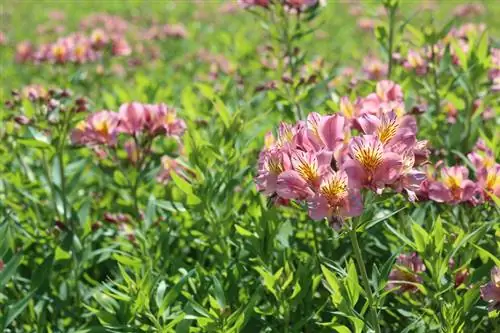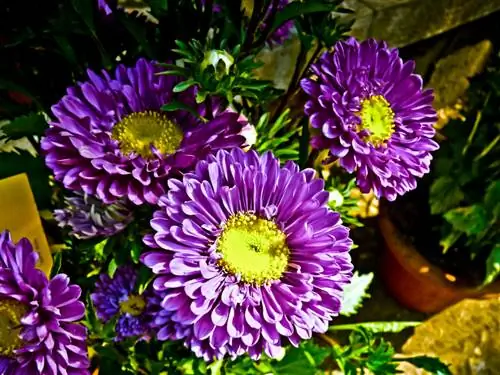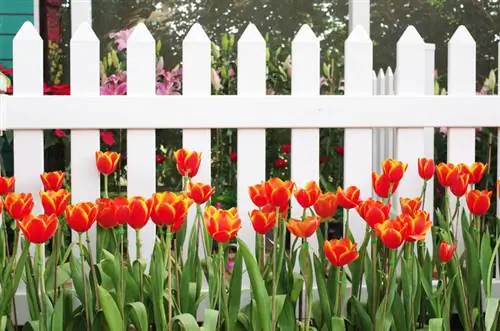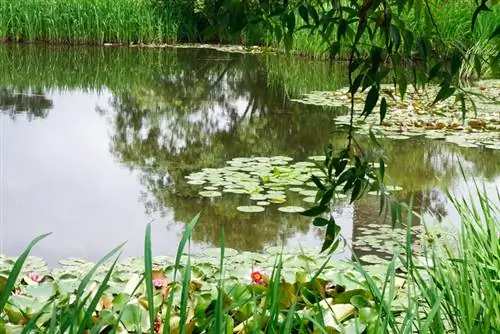- Author admin [email protected].
- Public 2023-12-16 16:46.
- Last modified 2025-06-01 06:02.
Montbretia thrives in its natural habitat in the grasslands and sunny mountain slopes of South Africa. This means that the cultivated varieties only have limited winter hardiness. When planting, you can do a lot to ensure that Montbretias survive the winter well in our latitudes and don't have to be dug up and replanted every year.

What is the best way to care for hardy Montbretias?
Winter-hardy Montbretias can be achieved through deep planting (10-20 cm), a protected, sunny location, well-drained, nutrient-rich soil and winter protection (e.g. E.g. mulch) survive the winter better. Montbretias reproduce via daughter tubers that can be transplanted in spring.
The Montbretia - not completely hardy
The Montbretie can usually survive single-digit temperatures below zero, provided it receives sufficient winter protection. Over the years, the small tubers retreat into the deeper soil layers where the frost no longer reaches the stolons.
The optimal planting depth
To improve winter hardiness, a fairly deep planting of at least ten and maximum twenty centimeters is advisable. As a result, the Montbretias sprout a little later, but are not affected by severe frosts.
The Location
Always plant winter-hardy Montbretia in a protected, full sun and warm location. A bed in front of a house wall is ideal. The wall stores the heat of the day and radiates it again during the night. This climate suits the Montbretias very much and they bloom very profusely under these conditions. Even in winter, the climate near the house is milder and the ground usually doesn't freeze as deeply as in other garden locations.
The ideal soil conditions
Montbretia prefer well-drained and nutrient-rich soils. Even the hardy varieties are very susceptible to root rot. Therefore, loosen the substrate with sand and add a thin drainage layer of sand or gravel to the planting hole.
Transplanting and propagating hardy Montbretias
If the hardy Montbretias are in an unsuitable location, they will only bloom sparsely and it is advisable to move them to another location. Unfortunately, Montbretias often do not bloom in the year they are planted, but reward the change of location with even richer blooms in the following gardening year.
Winter-hardy Montbretias form numerous daughter tubers with which you can easily propagate the plants. The ideal time for this measure is early spring, when the heat-loving flowering plant has not yet fully awakened from hibernation.
When do hardy Montbretias bloom
The flowering period of the hardy cultivars, like that of the species with only limited winter hardiness, falls between June and October.
Tip
Montbretien tubers are special treats for voles. To deter the voracious rodents, you can place the stolons in special plant baskets.






